Redgum is an Australian brand I wanted to be able to write great things about when I repaired and serviced this Redgum RGi120 integrated amplifier.
Being completely independent and running a website entirely without advertising means I always say exactly what I think. I’m not swayed by anyone else, I don’t owe anyone any favours and nor am I impressed by the paid-for-by-advertising mainstream media who’ll say anything for a dollar.
Sadly, despite wanting to, I couldn’t find much good to say about this Redgum RGi120 integrated amplifier. Angry fanboys and pitchfork-wielding evangelists notwithstanding, I posted the truth about what I found inside this Redgum RGi120, as Liquid Audio customers and visitors expect. Read on to see what I found.
Updated for 2019 and 2022: A couple of people did come after me, but with the typical emotion-rich and evidence-poor responses we see in such cases. You can read some of them and my replies in the comments below.
Disclaimer
Everything in this article is based on my objective examination of this Redgum RGi120 amplifier. I am not paid or sponsored by anyone. This article presents my opinions and experiences, from the perspective of a specialist hi-fi electronics repairer. They do not purport to represent all Redgum products, other Redgum products may differ and things may have changed since this unit was manufactured.
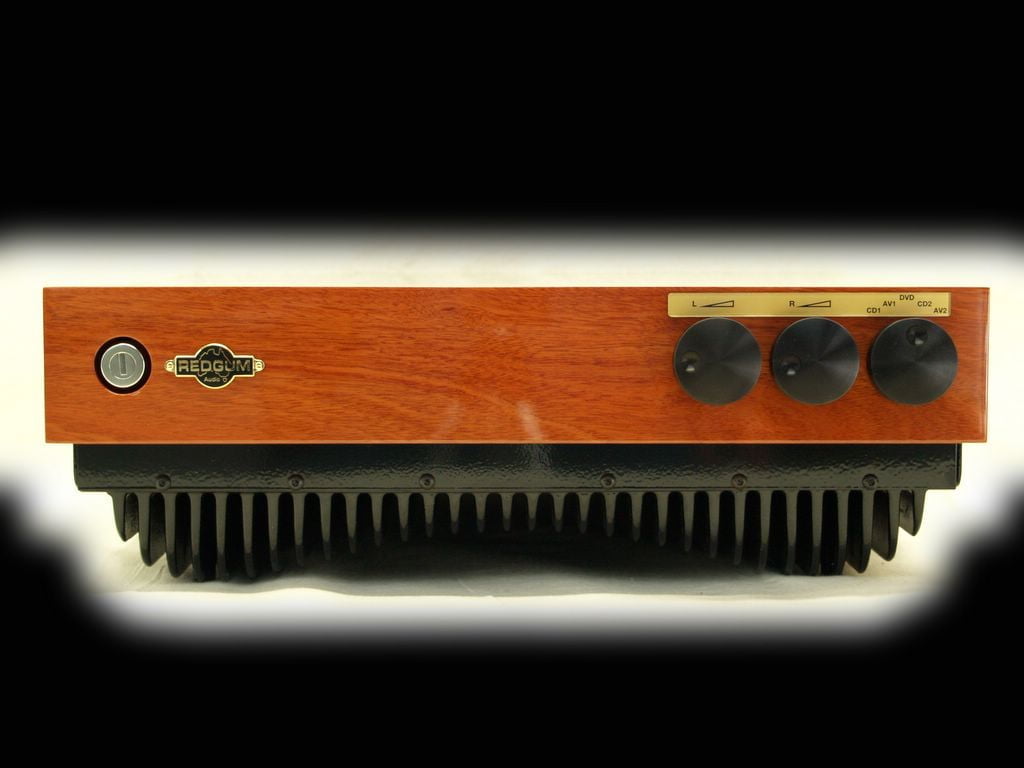
Article Goes Crazy
Someone mentioned this article on a local hi-fi forum and things went crazy. I received over 600 hits in one day, my greatest to that point. The manufacturer even responded, stating that using better parts would not make any difference, an extraordinary claim and one that is factually incorrect. Redgum stated that they use the lowest quality parts they need, to build the amplifier and have it function, hardly a shining endorsement of their design and manufacturing philosophy.
I initially pulled the post but then made it public again, my feeling is that users deserve to be informed about what is inside the gear they buy. I’m not scared by fanboys or the manufacturer I’m not paid by or afraid of anyone. I’m a completely independent repairer and writer. I provide information that helps people make informed decisions. Equipment like this Redgum RGi120 amplifier exists in the public domain and is therefore subject to public scrutiny.
Readers can make up their minds about what I found. I have no agenda, other than to debunk bullsh#t and to examine the engineering behind audio equipment. I have nothing against Redgum, or any other manufacturer for that matter. I just love well-engineered equipment, without silly and superfluous garnishment.
I’ll also make the point that it takes courage to step out from the crowd and write an article like this, knowing that there might be retaliation or retribution. That’s why you don’t see many articles like this. Do you think the manufacturer is going to send any work my way, even though I may be the best qualified to do it?
My Second Redgum
I hadn’t (at this point in 2014) worked on other Redgum gear before except for a sub-woofer amp. I have however worked on a great deal of hi-fi and laboratory gear over the years. I’d heard rumours that Redgum gear was overpriced and used low-grade parts. I was able to find out for myself when a customer brought in a Redgum RGi120 amplifier for service.
One of the twin volume controls (more on that later) had come loose and the speaker connectors were also loose. Popping the lid, I was surprised by what I found. The Redgum RGi120 chassis contained two small amplifier boards populated by very cheap components, attached to a fan-cooled heatsink. Sundry other low-quality power supply input and chassis parts completed the build.
Fan cooling enables smaller heatsinks to be used than would otherwise be possible with convection cooling. This is usually done to save money, small heatsinks and fans are cheaper to manufacture than large heatsinks. The Krell KSA-150 for example operates in class A and generates an enormous amount of heat, but there is no fan to be found. Krell went down the path of massive heatsinking, which is costly, but quiet and very reliable.
Altronics for example sells ‘PA’ style amps like this, with seemingly high power outputs (into an unspecified load, at an unspecified power bandwidth), for a low cost. These products are cheap partly because they use small fan-cooled heatsinks and cheap Chinese parts. Most of this gear is also made in China.
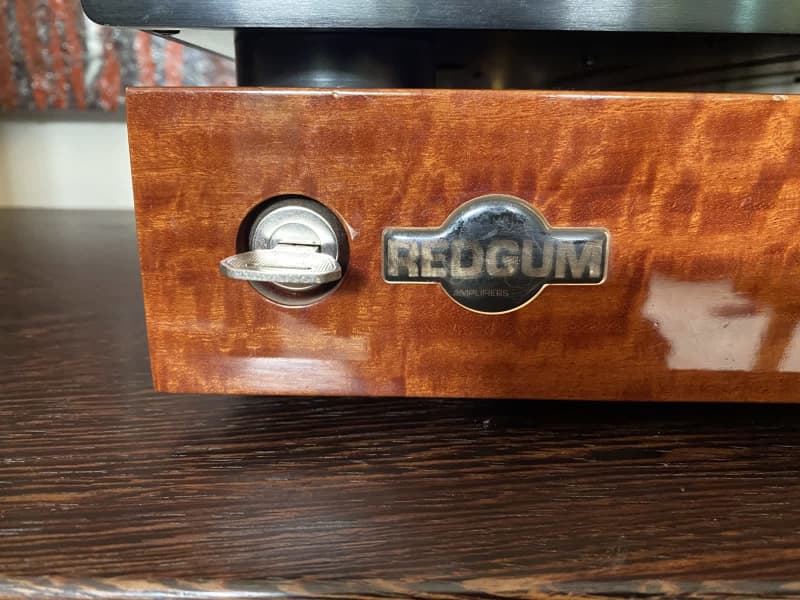
Cheap Parts
The capacitors in this Redgum RGi120 are low-spec Lelon and Samwha brand parts. These are not what one would expect to find in products that cost close to $3,000 AUD (in 2010!). The main filter capacitors are Lelon brand and similar in quality to the other small caps.
I strongly dislike Lelon capacitors and other cheap Chinese caps like them. In my opinion, they do not belong in an amplifier like this, and yes they really DO make a difference sonically and in terms of reliability. There are lots of cheap ‘green caps’, which are a metalised polyester capacitor. Film types by ERO/Wima/Siemens have better characteristics, but of course, cost more.
The transformer is a cheap Chinese toroid. It looks to be around 300VA max, which really is marginal for the power spec of the amp and again a way to save money. The output transistors are Exicon MOSFETs. Exicon is a brand known to be associated with fakes of other higher-spec transistors in the past – you can read about this here. I’ve had some success using real ie old Exicons, but there is a lot of variance with these devices.
For those who mistakenly think that parts don’t matter, I can only say that science and ears say they do. I know how premium parts make a real difference in reliability and performance. Capacitors and semiconductors vary enormously between nominally similar parts. Spending a few cents more per part will potentially decrease a manufacturer’s margin, but will potentially add increased service life and improved technical performance to a product.
Peddlers of the ‘cheapest is good enough’ approach are either unaware of the merits of using better parts or are hiding something. The merits of using better parts are easy to justify, plus we have two very refined instruments called ears and they prove that when we use quality parts, performance always improves.
The owner of Redgum operates (or did) with this cheap parts philosophy and to a point, I agree – a good design, using cheap parts will still sound good. But the same design using really good parts will sound even better, so there’s that.
Questionable Value
To be clear – I am not saying that there is anything fake or counterfeit in this Redgum RGi120. In my opinion, a manufacturer like Redgum would never knowingly use fake parts. What I am saying is that for your $AUD2,650 I believe you deserve a better build and bill of materials.
Yes, this amp is made in Australia, which is great! My concern is that this amplifier be made with high-reliability, high-quality parts. Everything about this amp would be better with better parts, especially low ESR, high ripple current, high-temperature Panasonic/Elna/Nichicon/Nippon Chemi Con/Rubycon capacitors.
The boards are quite simple and nicely laid out and are of reasonable quality at this price, all good points. Assembly adhesives are used to hold parts to one another and this is good practice in places. Trimpots are locked with sealant to prevent movement, but the mechanical construction of the chassis and the wiring is crude.
Poor Design
Trying to maintain channel balance is hard (almost impossible) when you have to adjust two volume controls independently. Seriously, who ever thought that using two separate volume controls was a good idea? I have seen rubber bands placed around these dual volume controls in an attempt to get them to move in sync with one another! This is simply a stupid design choice.
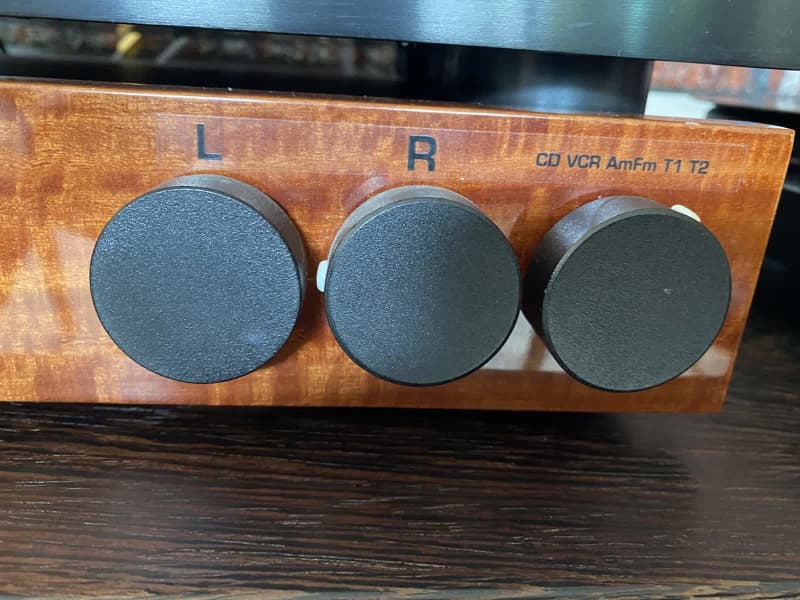
On the Redgum website, they talk about how having two volume controls is “better for sound” (Really? Now you care about sound but parts don’t matter??) because the number of contacts in the signal path is reduced by using dual mono pots.
Nonsense! The number of contacts in the signal path is the same whether using one stereo pot or two mono pots. Each channel has the same number of contacts, the same signal path etc! It’s this pseudo-scientific nonsense that reduces brand credibility and that commenters defending the brand fall for.
This is a bad design choice, guaranteed to generate channel imbalance. It’s no surprise that almost all other manufacturers use one volume control, with a balance control that can be used to correct minor channel imbalances as needed. Perhaps we should ask Accuphase, Mark Levinson or Nelson Pass why they choose not to use dual-mono volume controls?!
As for the amp having a ‘key’ to turn it on, the less said about that the better. A good way to guard against theft I guess. Just don’t lose the key, or leave it in the ‘ignition’! 藍
A Better Way
If in doubt, ask yourself this: why is it that HP/Agilent, Marconi, and Tektronix test and measurement instruments, the gold standard in engineering excellence, always contain premium parts?
This gear is used by the military, NASA, NSA, CIA, FBI, Lockheed-Martin, Boeing etc. They buy the best and purchase equipment that can deliver the specified performance for decades sometimes. Parts matter and if manufacturers want the best performance, they choose the best parts.
As for the loose volume knob I spoke about earlier, these volume shafts with knobs attached are held to the potentiometer shaft by a small piece of engine cooling or fuel hose, the same hose you might find in your local auto parts store. These have been hand-cut to length and then glued to the potentiometer shafts.
Let’s just say that I was shocked when I first looked inside this thing. Sure, it works and I am a fan of simple solutions, but there are more elegant and robust solutions to this problem. The volume knob had just been pulled out of the rubber hose because the glue had failed. The shafts didn’t even line up with the potentiometer mountings.
Perhaps that explains the cooling hose and the flexibility this allows because normally, angles like this would be dealt with by small universal joints, like the ones found in this Yamaha CA-2010 for example:
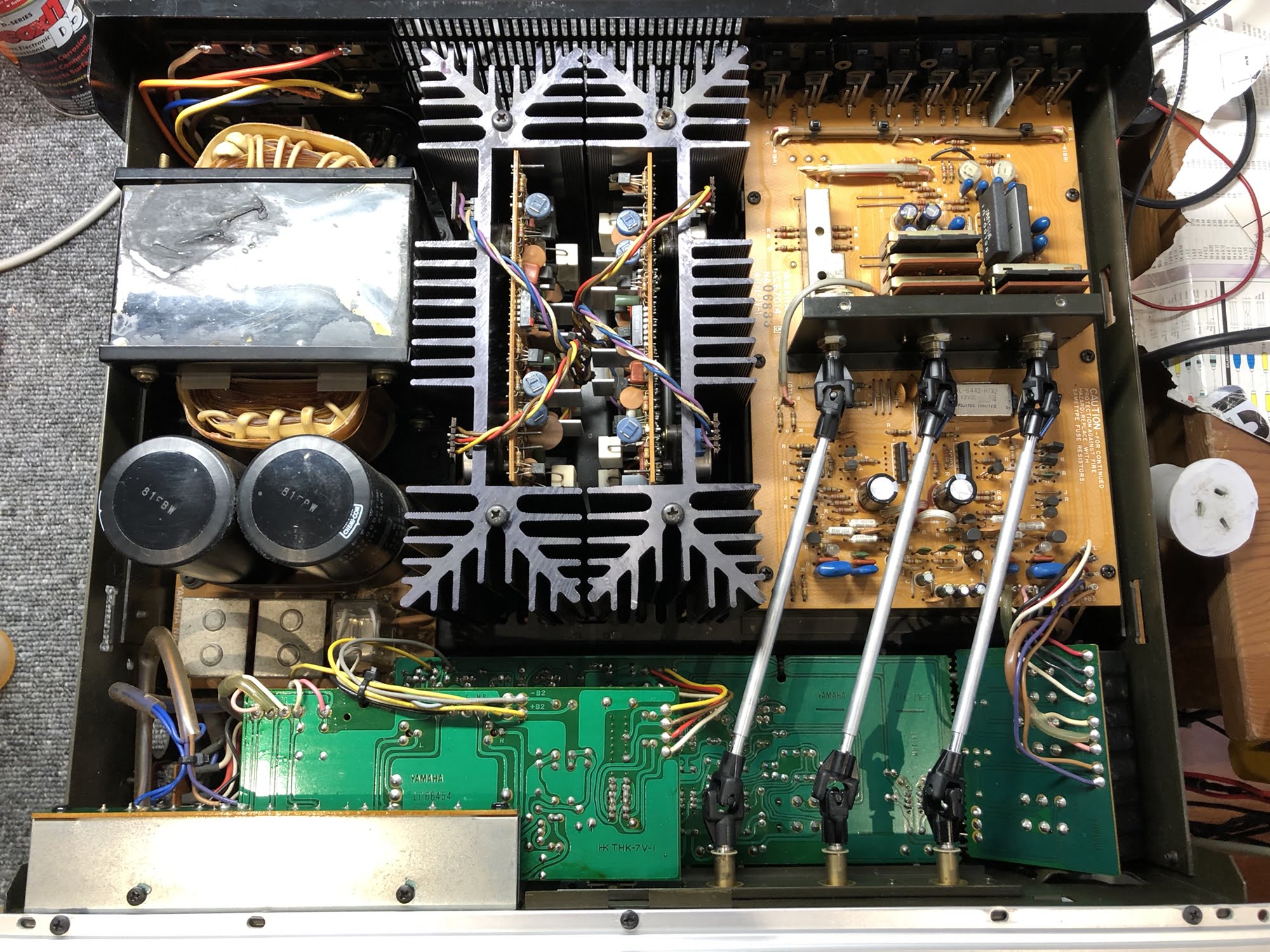
Because of how the shafts are angled, relative to the case, the knobs are also not square to the front panel, nor can they ever be. Perhaps Redgum has improved things since this amplifier was made – I sincerely hope so.
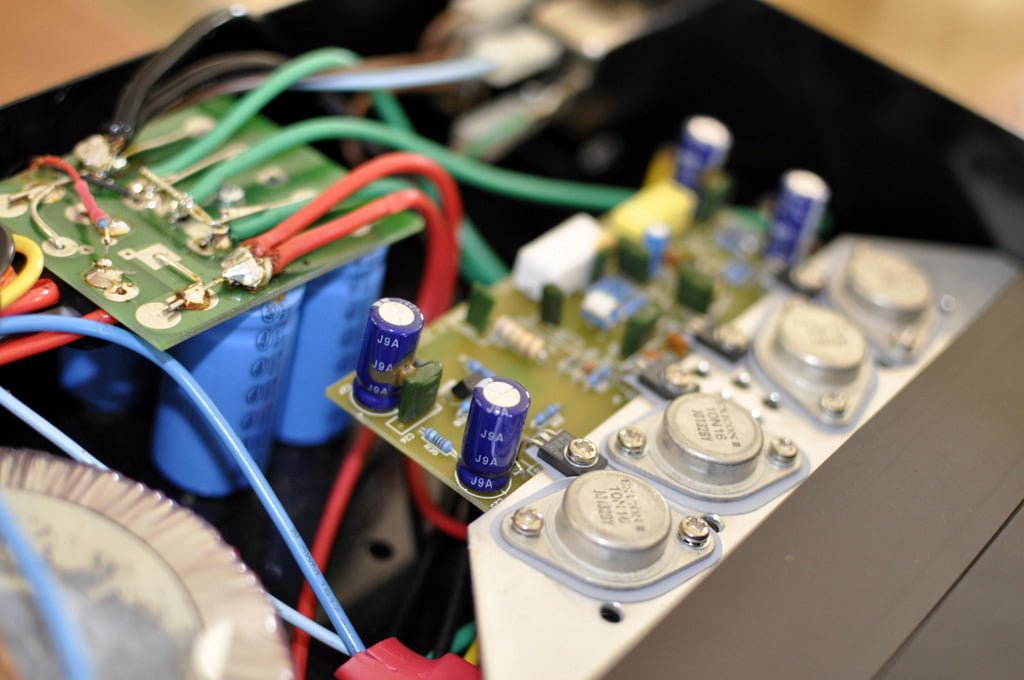
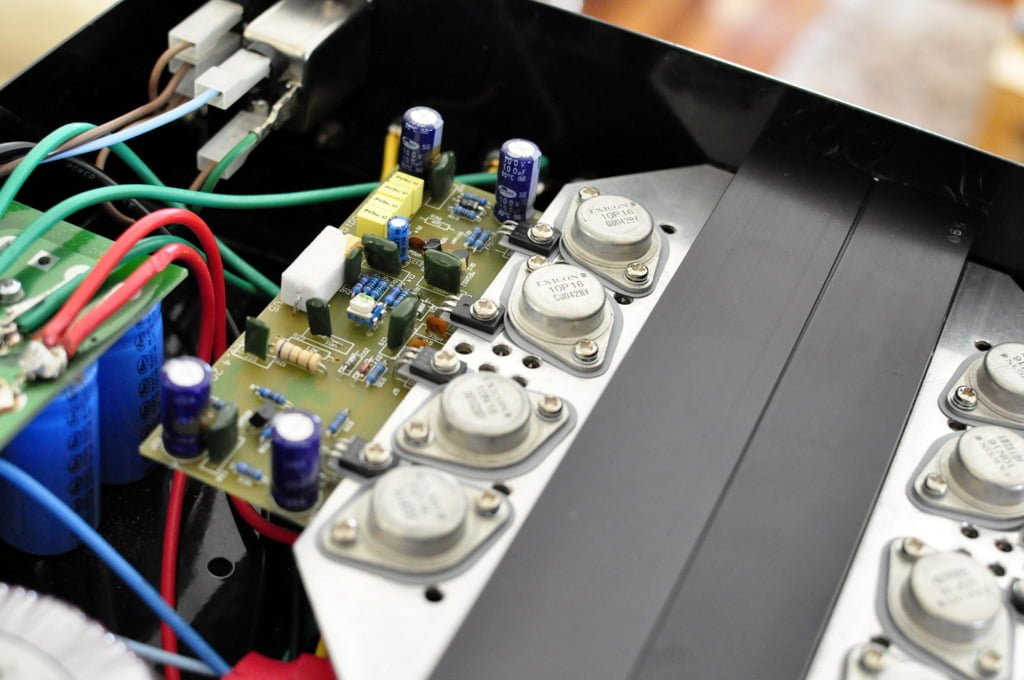
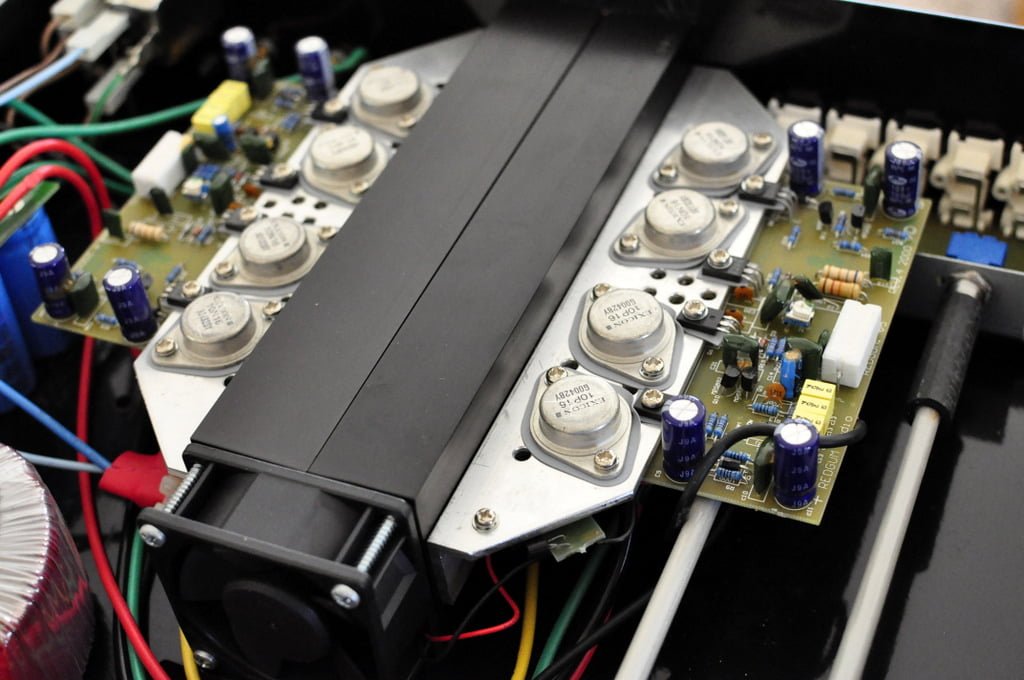
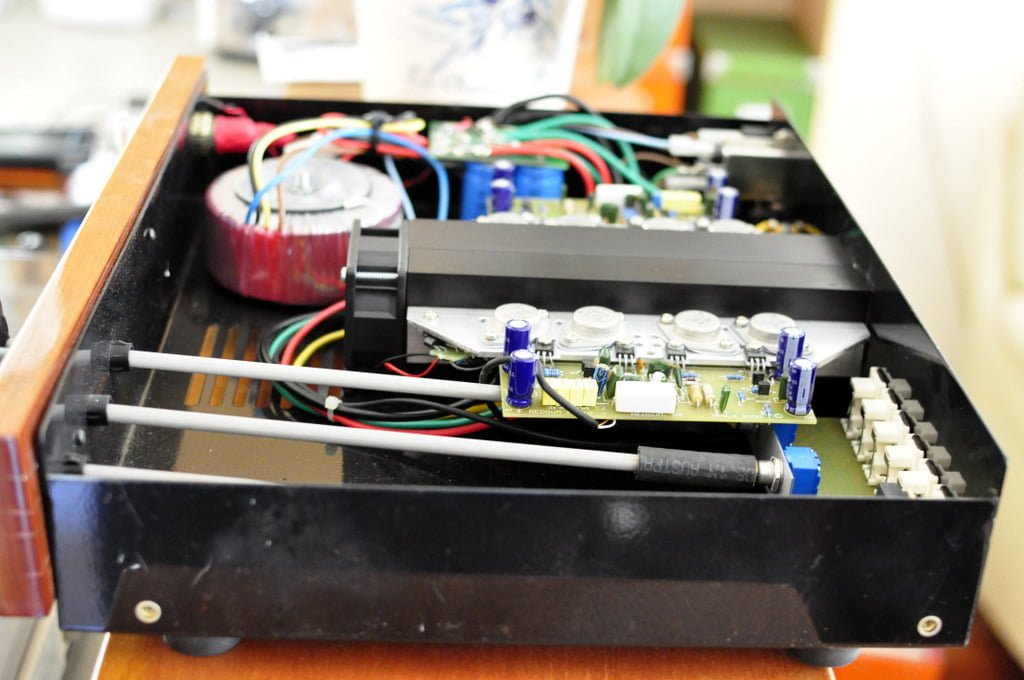
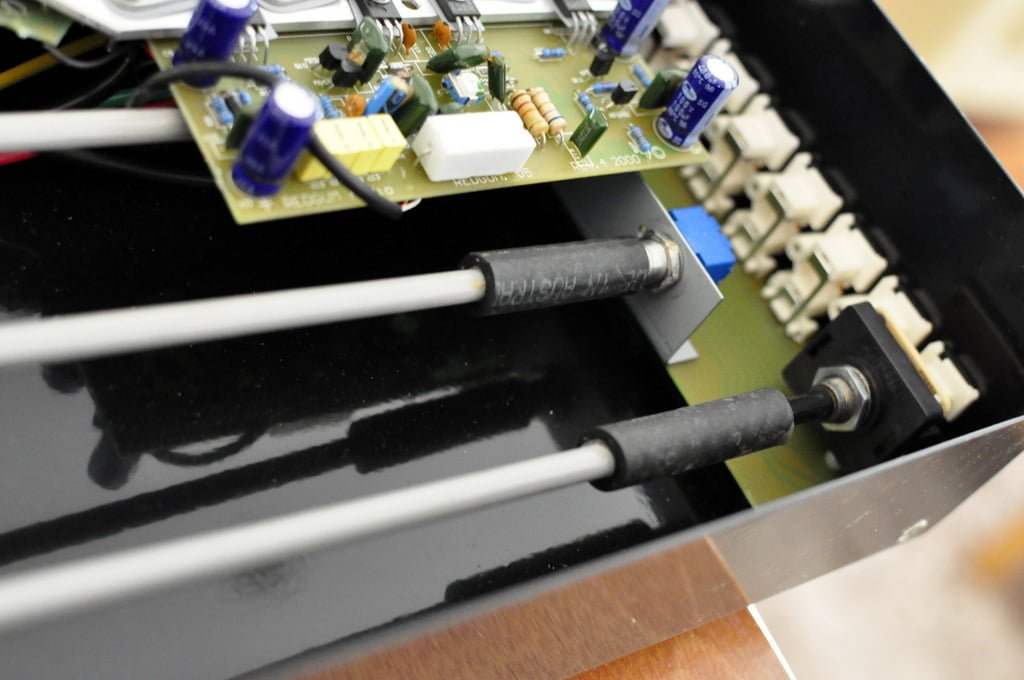
Food for Thought
My goal here wasn’t to harm or upset anyone, it was to raise awareness. There aren’t many unbiased and truly independent sources writing pieces like this, and I really appreciate the support from those who understand that.
For those who think I might be out to get Redgum, ask yourself which is more likely to be true:
- That a respected, independent repairer who’s been contributing positively to the hi-fi community for over a decade would one day wake up and decide to attack an Australian hi-fi manufacturer for no reason? Or,
- That this repairer simply found an expensive product that isn’t very well made and wanted people to know about it despite the personal risk in doing so, knowing the mainstream hi-fi press won’t ever mention it?
As always, thanks for reading. You’ll see there are some robust discussions in the comments, so check that out and feel free to leave a comment of your own. Just remember to be respectful!
Discover more from LiQUiD AUDiO
Subscribe to get the latest posts sent to your email.

I was thinking of going to the Melbourne AV & Audio Show in October to look at and hear the Redgum amplifiers. I want to support Australian made goods. I am a believer in quality and the current trend of “race to the bottom” for price vs quality is sales driven. Companies are focused on turnover and products lasting 15-20 years does not help this process. Unless the company owns the factory and controls the total manufacturing process, “quality control” of “made in China products” appears to be an over used term by the marketing departments of large corporates. Australian steel vs Chinese imported steel – false economy in the longer term.
I appreciate you forthright comments.
So in your experience, what stereo amplifiers brands currently being sold represent good quality build and parts.
Hi and thanks for your comments. My focus is on older, better made gear and I avoid working on current products where possible. My experience with current gear leads me to believe that much of it is cheaply made. Accuphase is one company still designing and building lab-grade equipment, but with equally high prices. BAT, Levinson etc all make great gear. At the lower end, some Cambridge and Audiolab seems OK, but not really good build and parts like great Japanese gear of old, just OK.
I know this comment is a bit late but I have only just come across it. To be honest your review looks and sounds like a real hatchet job and I’m not sure why you have taken this slant.
A read of other reviews would confirm that all other reviewers have a totally opposite view from yours. Ian Robinson is one of the most upstanding people in the audio business and to insult him in the way you have is disgraceful. You may believe that his products are over-priced but Redgum is not a large Japanese brand that has the benefits of large-scale production. Instead what you get is solid, down to earth and honest engineering and brilliant sound.
I have had an RGi 120 ENR for 20 years and have used it every day, bar vacation time for a month every year. Yes every day, either for my music or for my AV needs, via an pre/processor, using it as a power amp.
I have had just one issue with it. Around three years ago (ie around 17 years after purchase) there was some static and I contacted Ian Robinson who asked me to bring it in (fortunately I live in Melbourne). I took it round to his place and he asked me to leave it with him for an hour or so which I did while I went to have a coffee. When I returned he had the amp working like new, the issue being with a capacitor or something. The charge was less than the cost of a dinner and he fixed it immediately because he was due to go overseas the following day. How many other manufacturers would give you that service ?
For what it’s worth, I have bought several other power amplifiers, based on their reputations and none of them have held a candle to the Redgum. I still have these and have yet to sell them. One is a Primare 5 channel amp, had to be fixed because a friend, an electronics engineer, said the soldering was “crap”. Another, an Elektra 6 channel amp, had to be returned to the mfr for fixing because it shorted. The only one which has survived well is a Bryson 3 channel amp which seems to be bullet proof. The important part is that although these amps are supposed to have more power than the Redgum, they all sound wimpy compared to the Redgum, really wimpy and in a much lower class, despite their lofty reputations.
I have had two Primare Preamps, both beautiful sounds, but both have had to go in the bin because they were not repairable. Primare would not even send my electronics friend a circuit board to fix the problem. The agent here said it wasn’t worth fixing.
So you see the moral of the story is that despite all your ramblings, what Ian Robinson has said is correct. You don’t have to use super expensive parts to get a super sound. From what I’ve read in interviews, he tests every part for its sound before it goes into the amp.
You have besmirched a good honest man and if you were half decent you would send him an apology for your hatchet job.
For the record, I have no connection with Ian Robinson or his company other than as the owner of their product and that I met him once when he repaired my amp.
Hi Richard and thanks for taking the time to comment. Your comment is one of the few I’ve read supporting the manufacturer in relation to this story. Emotionally reactive comments like yours are the antithesis of what I deliver here through my website and it does make me wonder just what your connection to the manufacturer might be…
I’m interested in the engineering and performance of the gear I work on and write about. I present this information from the perspective of a working professional, repairing equipment from around Australia and beyond. This isn’t a review, it’s an article explaining what I found when working on the unit in question. Emotions and feelings about the company are not relevant here. I’m glad you’ve had good experiences with Redgum products and that isn’t at odds with what I found, these being quite separate concepts.
I don’t conduct ‘hatchet jobs’ as regular visitors know, and have no interest in doing so. I am, however, one of the few independent writers not afraid to air the truth about equipment, manufacturers, repairs and so on. Sadly, the same cannot be said for most of the mainstream, paid-for-by-advertising media.
What is relevant to my readers is what I actually found, working on this amplifier. The unit in question was cheaply built using low-grade parts, especially considering its retail price. These are facts that cannot be disputed by anyone with an informed perspective. I’ve made no comment about the business owner, my only issues are with the engineering of the unit in question and the overall value it represents for potential customers, irrespective of who manufactured it.
A friendly reminder to be polite and respectful when commenting. I’ve allowed your unedited comment on this occasion, so people can view our contrasting approaches to engaging with people. Your own ramblings about what Ian Robinson said or didn’t say and your ‘feelings’ about the company have no relevance to the build and parts quality of the unit in this article. You are welcome to ask questions and comment respectfully, but leaving the comment you did, when you lack the technical background to address the points I’ve raised or contribute usefully to the topic at hand, is neither helpful nor does it further useful conversation.
Hi Richard, I would have to disagree with you in regards to what you said about Mike’s article on the Redgum RGi120.
If a company is going to charge thousands of dollars for an amplifier, the amplifier must be engineered well and constructed using good quality parts. It is clear to me that Redgum hasn’t done either of those things.
Just look at its kit-like DIY construction and the cheap parts used in this amp. How can Redgum justify the price for this amplifier if it has been constructed using cheap Exicon transistors, Leylon capacitors and FUEL-HOSE coupling?! The company didn’t even try to hide the text printed on the fuel-hoses. I’m sure Super Cheap Auto has given Redgum a good price on fuel-hose by the meter, but you would think they would at least spend a few extra bucks on some chemicals to remove the text on the hoses before they installed them.
It’s obvious to me that Redgum really needs to reassess its pricing and I’m glad Mike took the time and effort to let people know about this.
Hi Tim and thanks for taking the time to comment, you raise some good points. I think many would love to be able to purchase a really high-quality, well-made Australian-made amplifier, not something needlessly complex or flashy, but genuinely well-made and well-engineered. It’s not enough that it’s made here, it should be really WELL-MADE here, without excuses, especially if it costs thousands. Yes, it costs more to use decent parts and construction, but it adds value, improves performance and extends service life. Can you use low-grade parts and get decent sound? Sure you can, but I would argue it’s not ethically, technically or sonically the right approach in equipment pitched and priced as serious audio gear.
Hi Richard Thank you for yogur articule People should be warned about Redgums poor quality. If I may ask, I bought with all my savings and RGi and after a little use only the left speaker gets sound. Any clue what can I do? Best regards Juan
Hi Juan, thanks for commenting. This is Mike, I wrote the article and run the site. You are most welcome regarding the heads-up and I agree, people need to know the truth about the engineering in equipment they pay good money for. The mainstream media certainly won’t tell you about it!
My advice with hi-fi equipment like this, whether it be Redgum or something else, is to take it to a specialist electronics repairer near you if there is one. They have the knowledge and experience to deal with issues like this, even with equipment they’ve not seen before. If you are anywhere near Perth I suggest bringing it in, though I’m guessing you are located somewhere outside of Australia?
hi i have owned a redgum rgi120enr 12 years from new and it has never missed a beat i am going to the speaker hospital and have fitted panasonic caps and mosfets +what else needs attention your report shows a need for better parts etc and redgum give a 7 year warranty no one else gives that with crap parts so what are the other audio builders using in there equipement makes you wonder and thanks for your unbiased report i had a rega planet 3 turntable and they hold the motor under the platter with 2 sided tape we do not know what crap we are being sold good wqork keep the bastards honest cheers nev
Thanks for sharing your experience Neville and for the kind words. The goal here is always to cut through the BS and present the facts, good or bad, something most seem to appreciate thank goodness!